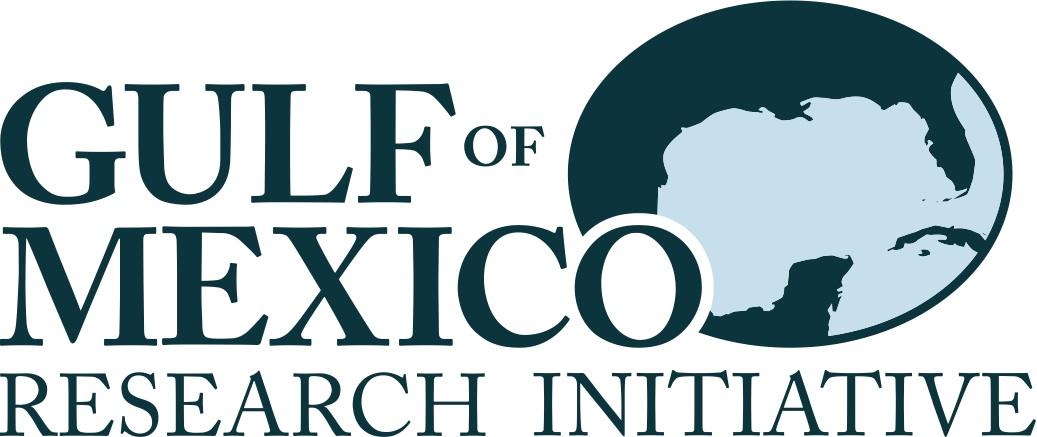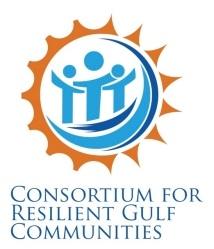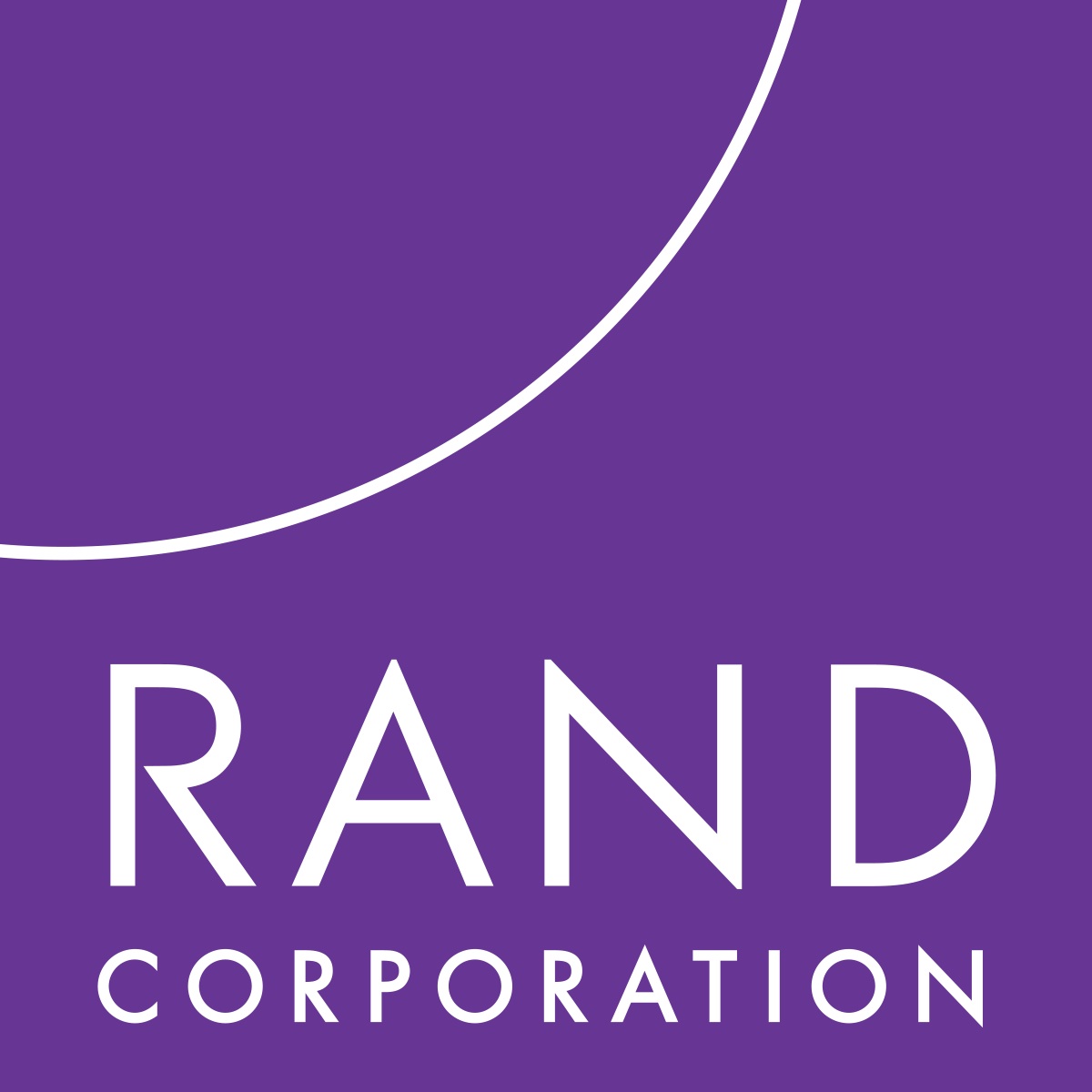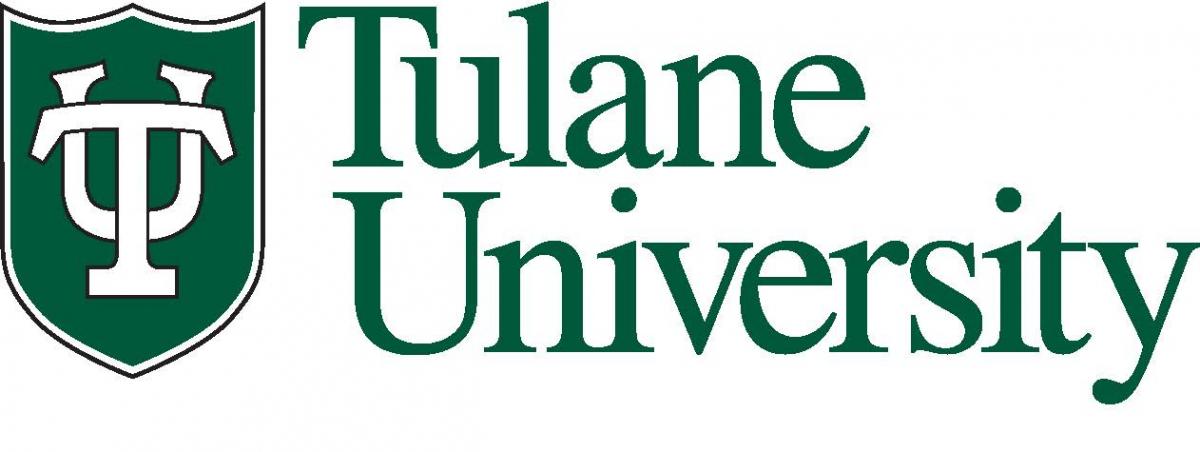On 20 April 2010, the Deep Water Horizon drilling rig operating approximately 50 miles (80 km) off the coast of Louisiana experienced a catastrophic failure that resulted in the release of petroleum (oil and gas) and subsequent explosion and fire, the ultimate sinking of the rig, and a discharge of gas and light sweet crude oil from an ocean depth of nominally 5000 feet (1525 m).
 The mission of the Gulf of Mexico Research Initiative (GoMRI) is to investigate the impacts of the oil, dispersed oil, and dispersant on the ecosystems of the Gulf of Mexico and affected coastal States in a broad context of improving fundamental understanding of the dynamics of such events and their environmental stresses and public health implications. The GoMRI also develops improved spill mitigation, oil and gas detection, characterization and remediation technologies.
The mission of the Gulf of Mexico Research Initiative (GoMRI) is to investigate the impacts of the oil, dispersed oil, and dispersant on the ecosystems of the Gulf of Mexico and affected coastal States in a broad context of improving fundamental understanding of the dynamics of such events and their environmental stresses and public health implications. The GoMRI also develops improved spill mitigation, oil and gas detection, characterization and remediation technologies.
The ultimate goal of the GoMRI will be to improve society's ability to understand, respond to and mitigate the impacts of petroleum pollution and related stressors of the marine and coastal ecosystems, with an emphasis on conditions found in the Gulf of Mexico. Knowledge accrued will be applied to restoration and to improving the long-term environmental health of the Gulf of Mexico.
The GoMRI Research Board develops the scientific program around the following research themes, which were developed through several public meetings, to address science gaps and research needs.
- Physical distribution, dispersion, and dilution of petroleum (oil and gas), its constituents, and associated contaminants (e.g., dispersants) under the action of physical oceanographic processes, air sea interactions, and tropical storms.
- Chemical evolution and biological degradation of the petroleum/dispersant systems and subsequent interaction with coastal, open-ocean, and deep-water ecosystems.
- Environmental effects of the petroleum/dispersant system on the sea floor, water column, coastal waters, beach sediments, wetlands, marshes, and organisms; and the science of ecosystem recovery.
- Technology developments for improved response, mitigation, detection, characterization, and remediation associated with oil spills and gas releases.
- Impact of oil spills on public health including behavioral, socioeconomic, environmental risk assessment, community capacity and other population health considerations and issues.
Consortium for Resilient Gulf Communities
 The mission of the The Consortium for Resilient Gulf Communities (CRGC) was established in 2015 with a three-year grant from the Gulf of Mexico Research Initiative to assess and address the public health, social, and economic impacts of the 2010 Deepwater Horizon oil spill in the Gulf of Mexico region. CRGC uses an interdisciplinary approach to research and outreach activities to address a major policy issue in this region with implications for the rest of the United States:
The mission of the The Consortium for Resilient Gulf Communities (CRGC) was established in 2015 with a three-year grant from the Gulf of Mexico Research Initiative to assess and address the public health, social, and economic impacts of the 2010 Deepwater Horizon oil spill in the Gulf of Mexico region. CRGC uses an interdisciplinary approach to research and outreach activities to address a major policy issue in this region with implications for the rest of the United States:
How can communities build resilience to future adverse events like the Deepwater Horizon oil spill?
The approach integrates theories and methods from multiple disciplines and also integrates researchers with community leaders and policymakers so that policy-relevant knowledge is produced in an iterative way to address GoMRI's Theme 5 (above). Primary focus is on (1) collecting new information about health, social well-being, and economic impacts of the Deepwater Horizon oil spill and (2) developing and testing methods for building community resilience.
The components to be addressed include:
- Component 1: Addresses current knowledge gaps by estimating the medium- and long-term public health, social, and economic effects of the DH oil spill to understand the effects of the 2010 DH oil spill
- Component 2: Build capacity for community action planning (CAP) using the data and findings established in Component I with on-the-ground support from field teams including community health workers, graduate and undergraduate students, and local organizations
- Component 3: Provide training for undergraduate and graduate students and postdoctoral scientists from LSU, Tulane University, USA, and Pardee RAND Graduate School, to learn about innovative, trans-disciplinary research methods and best practices in community disaster risk resilience in the Gulf States.
- Component 4: Establish Consortium Performance Evaluation Mechanisms and Metrics
The CRGC aims to reach and bridge community organizations and leaders, policy makers, and scholars by seeking to improve the understanding of and responses to hydrocarbon release disasters. By linking academic and practice institutions in our management model and integrating basic science and applied research, we will create products that are collectively used and informed by each audience.
Specific objectives include:
- Conduct use-inspired, problem-focused, interdisciplinary, and iterative research, outreach, and education.
- Strategy: The Consortium collaborates closely with communities and policy makers to ensure that academic-, policy-, and community-related outputs are directly relevant to building resilience to the accidental release of oil, other hydrocarbons, and related materials. A complex systems approach to resilience-based programming requires a trans-disciplinary and integrated research team comprised of members from multiple disciplines, including public health, psychiatry, psychology, sociology, economics, political science, implementation science, computer science, risk analysis, disaster resilience, ecology, decision science, and program evaluation.
- Assess the medium- and long-term public health, social, and economicimpacts of the Deepwater Horizon oil spill.
- Strategy: We assess the impacts of the Deepwater Horizon oil spill on public health, social support networks, and health-economics utilizing a telephone survey of a probability-based sample of households in Texas, Louisiana, Alabama, Mississippi, and Florida. The telephone survey is complemented by an in-person survey in areas relatively more exposed to the DH oil spill, oversampling communities of special interest (e.g., households whose income is primarily from the oil or fishing sectors). In addition, we will estimate the extent of economic costs of the DH oil spill imposed on major Gulf region industries (e.g., fishing and fish/seafood processing).
- Develop place-based capacity to build Community Action Plans (CAPs) and risk communication strategies to expand an deepen resilience.
- Strategy: We support community action planning using the data and findings established in our research and on-the-ground support from field teams including community health workers, graduate and undergraduate students, and local organizations. We use artificial intelligence and behavioral decision research methods to develop a profile-based web tool to help coordinate the display of information about the DH oil spill impacts and how to build resilience to future events for specific user groups (e.g., information intermediaries, county/parish emergency managers). These activities will result in evidence-based processes and templates for resilience strategies and risk communication.
- Train undergraduate and graduate students in disaster resilience research and outreach.
- Strategy: CRGC provides training for undergraduate and graduate students to learn about innovative, transdisciplinary research methods and best practices in community disaster resilience in the Gulf States. Including education as an explicit objective of our Consortium will advance discovery and understanding and promote teaching, training, and learning in diverse ways.
- Evaluate performance of the CRGC trans-disciplinary research, outreach, and education activities.
- Strategy: Using metrics derived from an Action-Logic Model, periodic self-evaluation provides a baseline against which we assess progress and improve CRGC planning and operations. This evaluation research will yield invaluable lessons for other trans-disciplinary and Gulf States programs aimed at assessing and addressing disaster impacts.
The Consortium for Resilient Gulf Communities (CRGC) is led by the RAND Gulf StatesPolicy Institute in partnership with researchers at the Department of Sociology at Louisiana State University (LSU), the Disaster Resilience Leadership Academy and Department of Computer Science at Tulane University, the Coastal Resource and Resilience Center at the University of South Alabama (USA), and Louisiana Public Health Institute (LPHI). Team members represent multiple disciplines, including public health, psychiatry, psychology, sociology, economics, political science, implementation science, computer science, risk analysis, disaster resilience, ecology, decision science, and program evaluation. A complex systems approach to resilience-based programming requires this transdisciplinary approach.
 The RAND Corporation is a nonprofit, nonpartisan institution that helps to improve policy and decision making through research and analysis. In 2005, RAND created the Gulf States Policy Institute in New Orleans LA and Jackson MS to help address questions related to a wide range of issues that include coastal protection and restoration, health care, and workforce development. RAND brings extensive experience in managing large, multi-institutional collaborations that require significant institutional support for efficient operations. RAND provides strong research support services, including an information infrastructure that facilitates work across multiple locations, highly sophisticated computing software and hardware systems, an extensive data collection facility, a state-of-the art publications department, schedule management and financial systems for tracking projects, and professional advisory groups that contribute statistical, survey, and communications support to projects.
The RAND Corporation is a nonprofit, nonpartisan institution that helps to improve policy and decision making through research and analysis. In 2005, RAND created the Gulf States Policy Institute in New Orleans LA and Jackson MS to help address questions related to a wide range of issues that include coastal protection and restoration, health care, and workforce development. RAND brings extensive experience in managing large, multi-institutional collaborations that require significant institutional support for efficient operations. RAND provides strong research support services, including an information infrastructure that facilitates work across multiple locations, highly sophisticated computing software and hardware systems, an extensive data collection facility, a state-of-the art publications department, schedule management and financial systems for tracking projects, and professional advisory groups that contribute statistical, survey, and communications support to projects.
 Louisiana State University (LSU) is Louisiana's Flagship University and is designated as a Land-, Sea-, and Space-Grant Institution. LSU's research enterprise encompasses every aspect of a major research university with a Carnegie Classification of Research Active/Very High, and therefore possesses all of the facilities and support infrastructure consistent with that elite distinction, including computing, internet, communications, and laboratory resources. Coastal studies are at the core of LSU's research mission.
Louisiana State University (LSU) is Louisiana's Flagship University and is designated as a Land-, Sea-, and Space-Grant Institution. LSU's research enterprise encompasses every aspect of a major research university with a Carnegie Classification of Research Active/Very High, and therefore possesses all of the facilities and support infrastructure consistent with that elite distinction, including computing, internet, communications, and laboratory resources. Coastal studies are at the core of LSU's research mission.
 Tulane University is a private institution with a Carnegie Classification of Very High Research Activity, with concomitant facilities and technologies. The Disaster Resilience Leadership Academy is an interdisciplinary academic center with participating faculty from Tulane's School of Architecture, A.B. Freeman School of Business, School of Law, School of Public Health and Tropical Medicine, and School of Social Work.
Tulane University is a private institution with a Carnegie Classification of Very High Research Activity, with concomitant facilities and technologies. The Disaster Resilience Leadership Academy is an interdisciplinary academic center with participating faculty from Tulane's School of Architecture, A.B. Freeman School of Business, School of Law, School of Public Health and Tropical Medicine, and School of Social Work.
 Louisiana Public Health Institute (LPHI) is an independent, statewide 501(c)(3) nonprofit organization established in 1997. The Institute collaborates with a broad array of partners to design, implement and evaluate complex programs to address the broad determinants of health and improve population health, including clinical health services, primary prevention, community and organizational capacity building, and policy solutions. Facilities and support infrastructure includes office and conference space, computers, high-speed internet access, teleconferencing, financial and administrative services, etc.
Louisiana Public Health Institute (LPHI) is an independent, statewide 501(c)(3) nonprofit organization established in 1997. The Institute collaborates with a broad array of partners to design, implement and evaluate complex programs to address the broad determinants of health and improve population health, including clinical health services, primary prevention, community and organizational capacity building, and policy solutions. Facilities and support infrastructure includes office and conference space, computers, high-speed internet access, teleconferencing, financial and administrative services, etc.
 University of South Alabama (USA), is a four-year public university with a Carnegie Classification of Research Active/High, and associated facilities and equipment for ensuring proper management of research funds. The Coastal Resource and Resiliency Center (CRRC) was established in 2012 as part of the Gulf Region Health Outreach Program. The CRRC trains Community Health Workers for under-served populations along the Gulf Coast (Alabama, Mississippi, Florida, and Louisiana) who are dependent on the Gulf of Mexico's resources.
University of South Alabama (USA), is a four-year public university with a Carnegie Classification of Research Active/High, and associated facilities and equipment for ensuring proper management of research funds. The Coastal Resource and Resiliency Center (CRRC) was established in 2012 as part of the Gulf Region Health Outreach Program. The CRRC trains Community Health Workers for under-served populations along the Gulf Coast (Alabama, Mississippi, Florida, and Louisiana) who are dependent on the Gulf of Mexico's resources.
